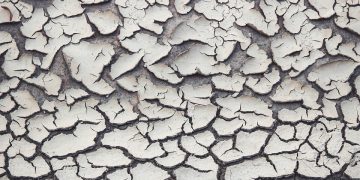The Earth’s Battle: Global Warming vs Climate Change
As the planet continues to face environmental challenges, two terms that are often used interchangeably are global warming and climate change. While they are related, they refer to different phenomena that impact the Earth’s climate. In this article, we will explore the differences between global warming and climate change, their causes, effects, and what we can do to address these pressing issues.
Global Warming: The Rising Temperatures
Global warming refers to the increase in the Earth’s average surface temperature due to human activities, such as the burning of fossil fuels and deforestation. These activities release greenhouse gases, such as carbon dioxide and methane, into the atmosphere, which trap heat and cause the planet to warm up. The consequences of global warming are far-reaching and include rising sea levels, melting glaciers, and more frequent and severe weather events.
One of the main contributors to global warming is the burning of fossil fuels for energy production, transportation, and industrial processes. The combustion of coal, oil, and natural gas releases carbon dioxide into the atmosphere, where it accumulates and contributes to the greenhouse effect. Deforestation is another significant factor, as trees absorb carbon dioxide from the air and help regulate the climate.
Climate Change: The Broader Picture
Climate change encompasses a wider range of environmental impacts beyond just rising temperatures. It refers to shifts in weather patterns, precipitation, and other aspects of the Earth’s climate system. While global warming is a key component of climate change, it is not the only factor at play. Climate change can also result from natural processes, such as volcanic eruptions and variations in the Earth’s orbit.
Human activities, however, are accelerating the pace of climate change and exacerbating its effects. In addition to global warming, other consequences of climate change include ocean acidification, loss of biodiversity, and disruptions to ecosystems. These changes can have far-reaching implications for human health, agriculture, and economies around the world.
The Causes of Global Warming and Climate Change
As mentioned earlier, the main causes of global warming are the burning of fossil fuels and deforestation, which release greenhouse gases into the atmosphere. These gases trap heat and cause the planet to warm up, leading to a range of environmental impacts. In addition to human activities, natural factors, such as solar radiation and volcanic eruptions, can also influence the Earth’s climate.
Climate change, on the other hand, is driven by a complex interplay of factors, including greenhouse gas emissions, land use changes, and natural variability. While global warming is a significant contributor to climate change, other factors, such as changes in ocean circulation patterns and the melting of ice caps, can also influence the Earth’s climate system. It is important to consider these various factors when addressing the challenges of climate change.
The Effects of Global Warming and Climate Change
The effects of global warming and climate change are already being felt around the world, with impacts ranging from extreme weather events to disruptions in food production. Rising temperatures are causing glaciers to melt, sea levels to rise, and ecosystems to shift. These changes can have profound consequences for both human and natural systems.
Extreme weather events, such as hurricanes, droughts, and heatwaves, are becoming more frequent and severe due to global warming. These events can result in loss of life, damage to infrastructure, and disruptions to communities. In addition, changes in precipitation patterns can lead to water shortages, crop failures, and food insecurity.
What Can We Do to Address Global Warming and Climate Change?
Addressing global warming and climate change requires collective action at the individual, community, and global levels. One of the most effective ways to reduce greenhouse gas emissions is to transition to renewable energy sources, such as solar and wind power. By investing in clean energy technologies and improving energy efficiency, we can reduce our carbon footprint and mitigate the impacts of global warming.
In addition to transitioning to clean energy, we can also take steps to conserve resources, reduce waste, and protect natural ecosystems. Planting trees, reducing water consumption, and supporting sustainable agriculture practices can help mitigate the effects of climate change and promote a healthier planet. It is important for individuals, businesses, and governments to work together to address these pressing environmental challenges.
In Conclusion
Global warming and climate change are complex issues that require urgent action to address. By understanding the differences between these phenomena, their causes, and effects, we can work together to mitigate their impacts and build a more sustainable future for generations to come. Through collective action and a commitment to sustainability, we can protect the Earth’s climate and create a healthier planet for all.
Let’s join forces to combat global warming and climate change, and preserve the beauty and diversity of our planet for future generations.





